Activating Wellness Cards
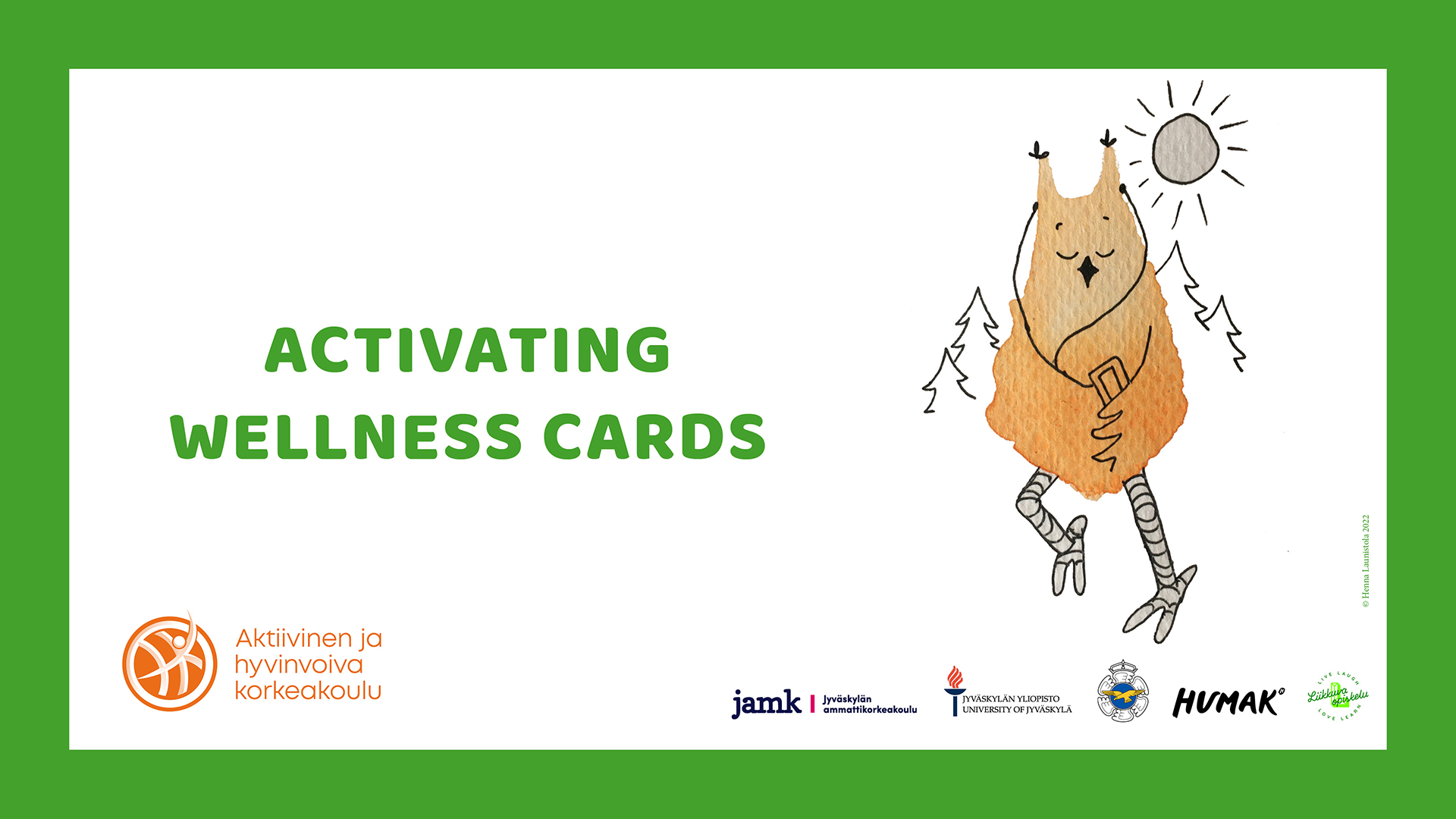
The cards remind and inspire to take breaks during study and teaching, and to reduce and take breaks from sitting. The cards have three themes: activating break, restorative break and functional teaching methods.
Activating well-being cards contain tips for moving the body while studying and working, as well as instructions for short
and easy break activities.
Restorative break cards give ideas for relaxation and recovery during study and teaching. The cards contain instructions for, among other things, short breathing exercises, practice of presence and imagery training.
Functional teaching method cards are primarily aimed at teachers. It is easy to draw ideas from the cards to activate the teaching, even in the midst of a rush.
The cards have been designed by Vilma Mietola and Henna Launistola. Illustration by Henna Launistola.
- Close your eyes and inhale and exhale few times at your own pace.
- Clench your fingers and strongly tense your arms from the fingers to shoulders for five to ten seconds. Relax your arms and repeat.
- Curl your toes and tense your feet and calves strongly for five to ten seconds. Relax and repeat.
- Wrinkle your face and tense muscles of your face for five to ten seconds. Relax and repeat.
- Finally, breathe a few times at your own pace.
- Recognize how your body feels now.
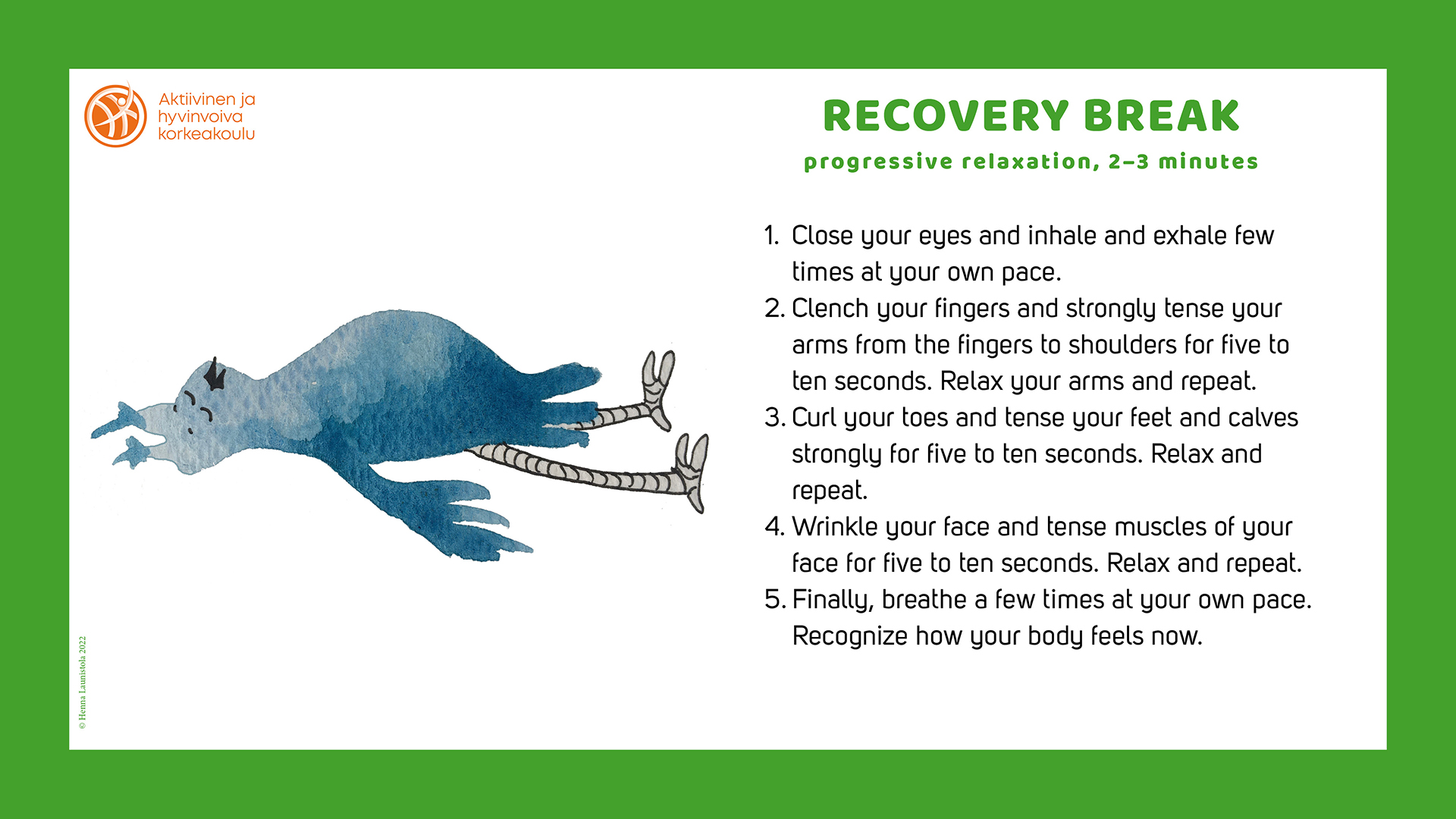
- Close your eyes and breathe slowly in and out few times. Focus on your breathing and how it makes you feel.
- Listen to your favorite song. You can also listen to sounds of nature. For example, the sound of rain calms.
- Look out of the window and focus on the moment. What do you see?
- Have a snack or coffee somewhere else than where you study, for example outside.
- Do something else for a moment. Have a little chat with a friend next to you.
- Go outside for a moment. Focus on all the sounds and scents you can sense.
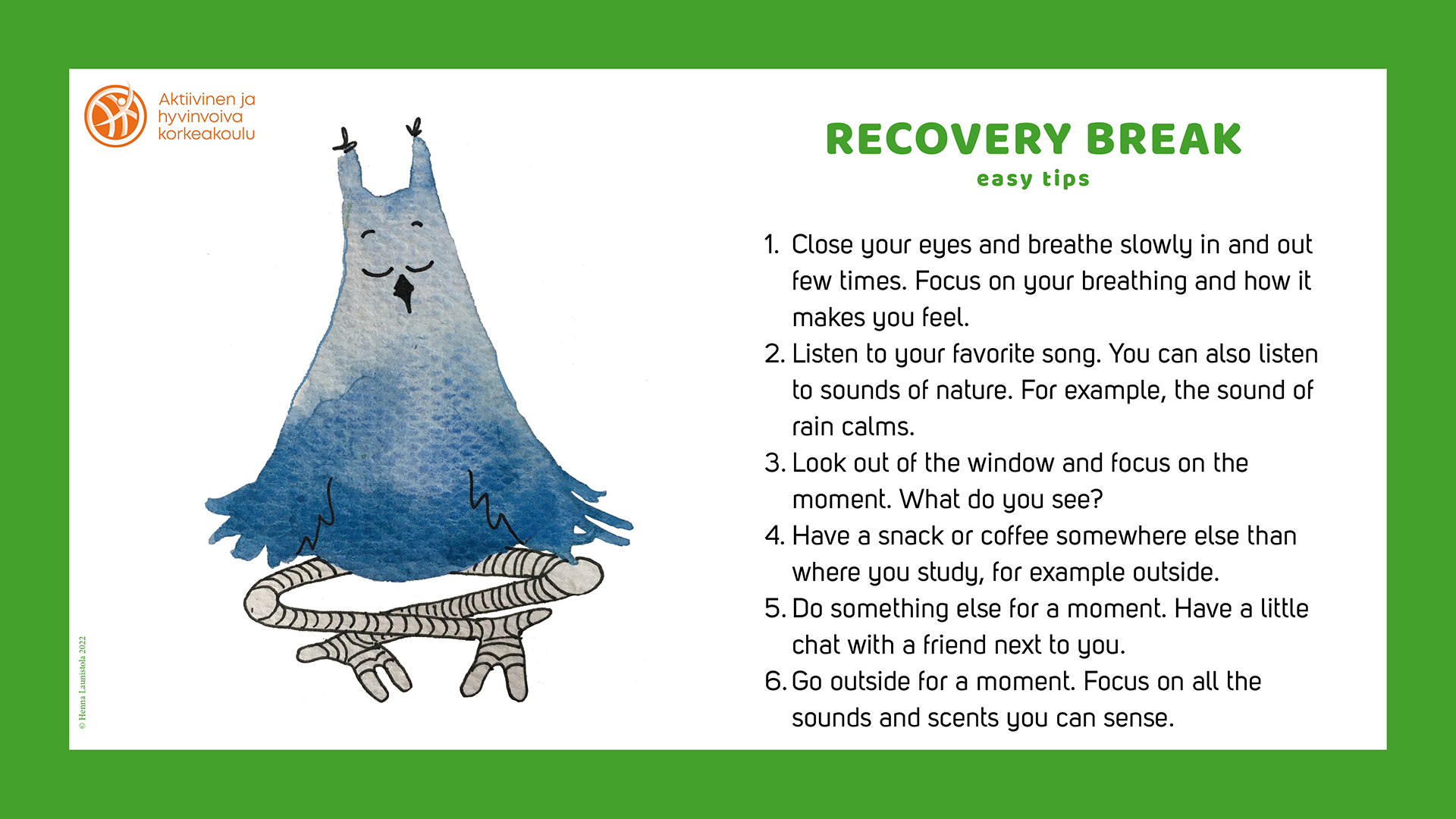
- Allow movement and changes of working positions in your lecture
- Remind to change position or to stand up every 30 minutes
- Encourage the use of different kind of activating tools like gym balls, sticks or standing desks. Show example!
- Take a short break during your lecture by using a break video or lead a short movement break by yourself.
- You can also let students plan and lead activity breaks themselves
- Encourage to do pair tasks or brainstorming while standing or walking
- Let students take short breaks outside to get some fresh air
- Use functional teaching methods.
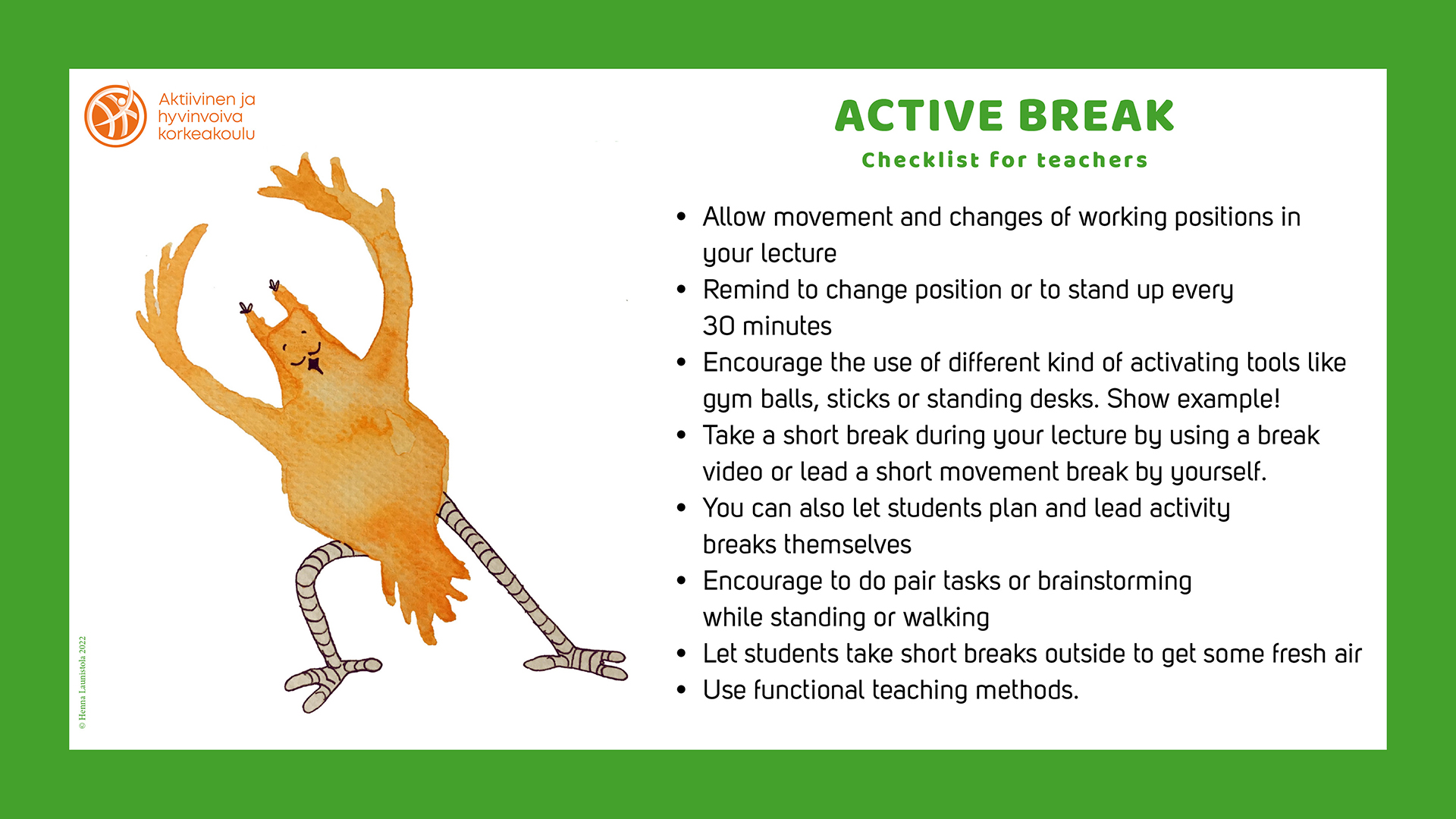
You can do movements while sitting or standing. Repeat all the movements on both sides.
- Raise your shoulders to your ears and drop them down. Repeat a few times.
- Roll your shoulders a few times.
- Put your fingers to your shoulders and draw circles with your elbows.
- Roll your hands around with large movements.
- Keep your neck relaxed and draw circles with your head.
- Bring your hand in front and round your upper back by bringing your chin to chest. Then open your hands to the sides and push your chest forward.
- Finally relax your hands and shoulders by shaking them.
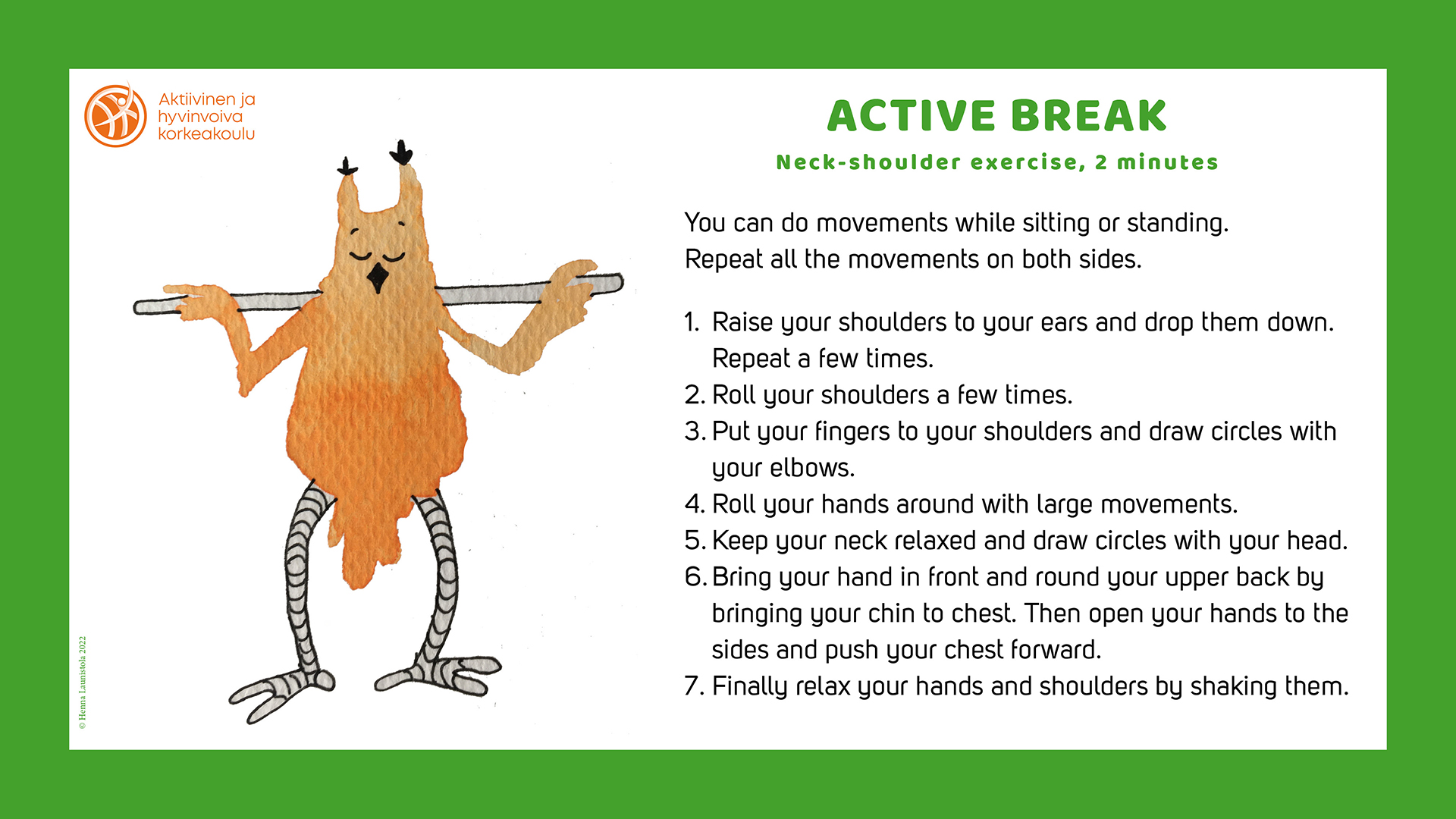
- Encourage and allow students to move around during your class. Show example!
- Instruct to do group or pair conversations while standing.
- Do a physical voting about the theme being taught
- Move the teaching to nature nearby #outdoorofficeday
- Upload wellness cards to your slide show.
- Use them for example on every fifth slide.
- Remind students to change workstation or working position every 30 minutes.
- Go for a walk and talk about the topic of the lecture while moving in nature. Notes can be made by phone or in the class after walking, while summarizing.
- Encourage to hold presentations by standing.
- Encourage students to give applause by standing after presentations.
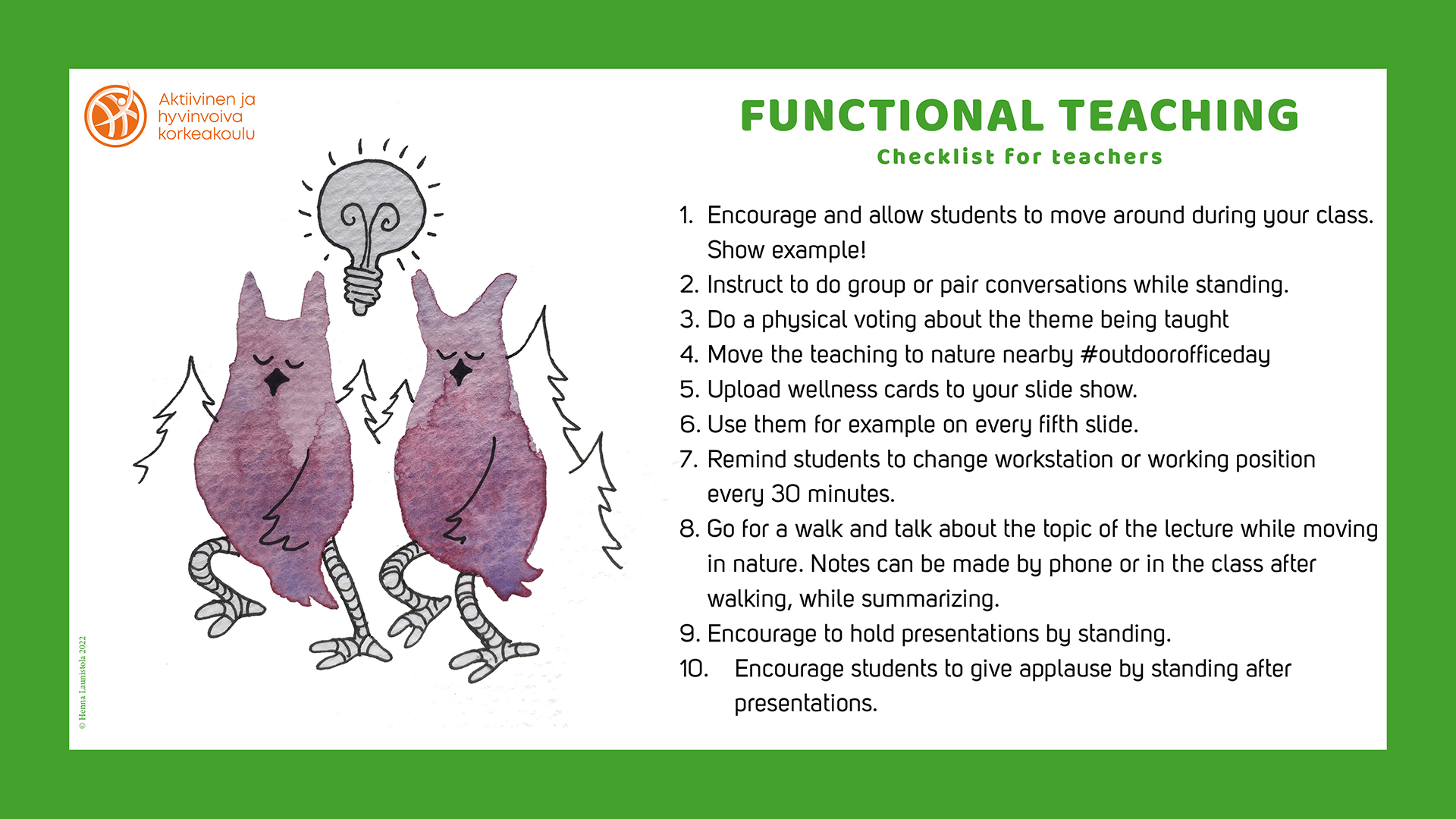
- Organize as many task points as needed in the classroom.
- Divide students into groups according to how many tasks points there are.
- Every group stays on one task point for 5 to 10 minutes.
- After this groups change task points so that every group goes to every task point.
- At last, let’s look together at what kind of answers were given to each task. Talk about the results while standing or moving from one task point to another.
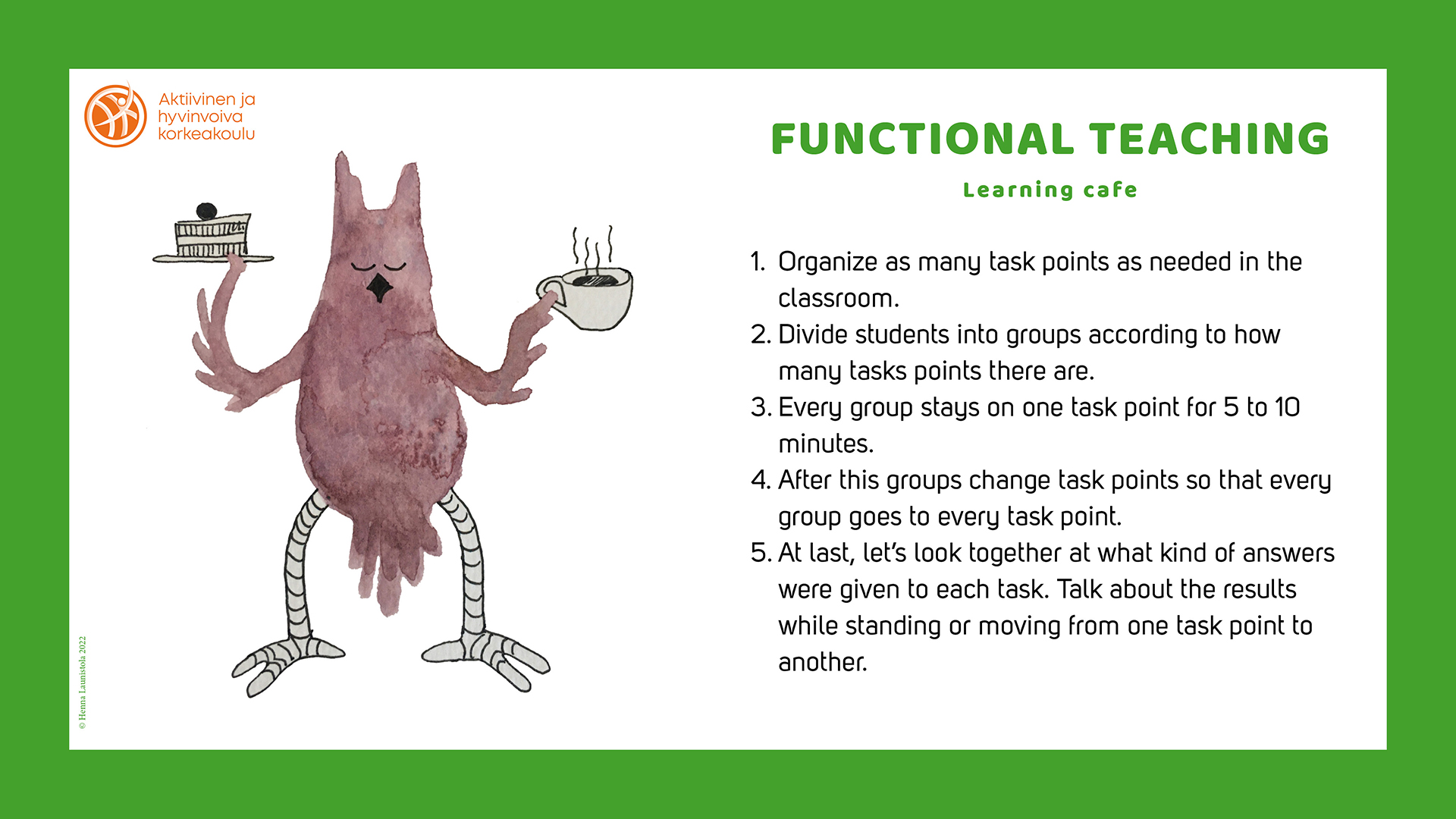
- Divide students into 4–8 persons groups (use breakout rooms in online learning).
- Each member of the group comes up with one movement, for example: a movement that your body needs now, a movement which is somehow related to the subject of the lecture or a movement which describes your own feeling
- Members of the group instruct others how to do the movement and everyone does the same movement together.
- You can repeat the round a few times.
